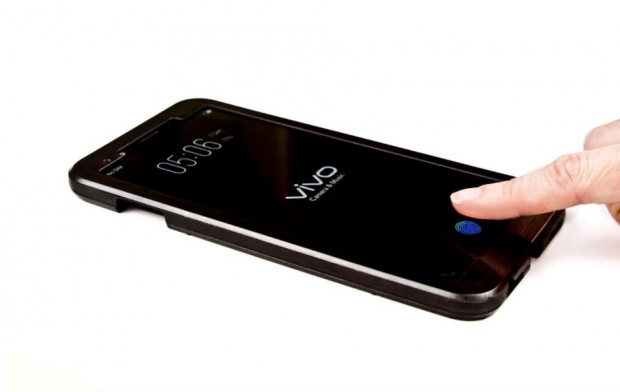Godfrey was one of the key marketing guys behind the legendary ATI All in Wonder cards, but these days Godfrey works for Synaptics as a Vice President of Marketing. The company is most likely powering some of the devices you have, and it specializes in touch controllers, fingerprint sensors, integrated touch and displays, digital headset SoCs, Multimedia and Video Processing and Imaging.
The company currently has big automotive aspirations, but more importantly, it managed to be the first company to show us an actually working under-display fingerprint sensor.
China-based vendor Vivo has made a prototype of a phone that looks like a production-ready version. We didn’t peek under the hood of the phone, but the phone worked well and especially the unlocking part. Godfrey let us play with the phone and, honestly, it works like magic.
Near Bezel-less is the new black
Synaptics is using under-display CMOS image sensor that is significantly faster than iPhone X 3D facial recognition. We played with Samsung’s Iris scanner too, that works quite well but it gets confused by a bright sun. A fingerprint sensor is prone to that and it is not a big secret that placing it under the display makes perfect sense.
Godfrey confirmed that the sensor works whether your finger is dry or wet and the heat and cold do not affect performance and precision.
The whole unlocking process looks like magic. There is a fingerprint animation on the display, you place the finger and the under-display CMOS image sensor lights up your fingerprint, capture an image of it, then unlocks your device.
It is as secure as a traditional finger print reader that sits under the display, or on the rear side of the phone. Qualcomm is also working on its solution, but so far, Synaptics might be the first to ship its solution.
Here is a short video of how it works.
@SynaCorp @godfreycheng1 shows the future of phone unlocking #Vivo pic.twitter.com/cAKcHodjAY
— Fudzilla (@FudzillaNews) January 11, 2018




